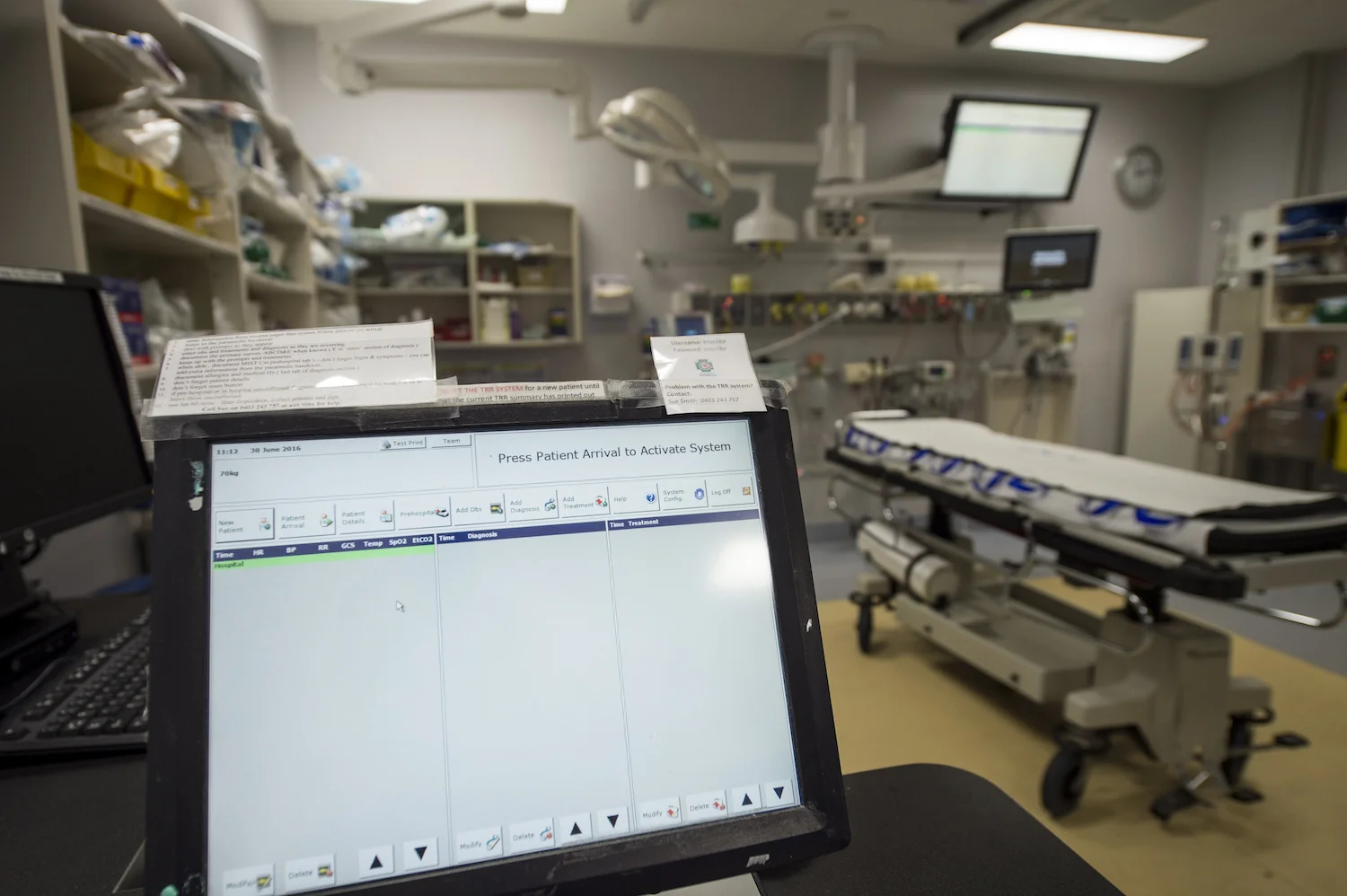Algorithms for Trauma Reception and Resuscitation
The staff at The Alfred Hospital created a set of algorithms that would be suitable for the first 30 minutes of trauma reception. This team included nurses, emergency physicians, anaesthetists and trauma surgeons who collated the most recently available evidence relating to trauma management. Using a software tool provided by Swinburne University, these staff created more than 40 algorithms for use during our trial.
At the heart of the TR&R® system is a set of medical algorithms that provide the decision support for the crucial first 30 minutes of trauma, reception and resuscitation. Patient data including vital signs, confirmed and/or unconfirmed diagnoses and treatments are entered into the TR&R® System directly from a monitor or by the Trauma Nurse Leader. Based on this data, computerised algorithms prompt the Trauma Team in real time to confirm the state of the patient, perform procedures and administer drugs as well as assisting with diagnosing injuries.
The medical algorithms at the core of the TR&R® System are guides for the Trauma Team. They are not prescriptive and they do not replace the expertise of the medical staff. The algorithms have been, and will continue to be, subject to close scrutiny, discussion and evaluation by trauma specialists.
The Algorithm Designer Tool
To create the algorithms for the TR&R® system an innovative design tool was developed. The Algorithm Designer Tool allows the user to create and edit all medical reference data used by the system, and allows the user to design and update medical algorithms.
The tool allows the algorithms to be modelled in a manner similar to standard flow charts, however, the symbols used are unique to the medical algorithm standard, and unlike conventional flow charts, algorithms include a time line.
All algorithm and reference data used by the TR&R® system is stored as XML, allowing the system to be easily updated.

